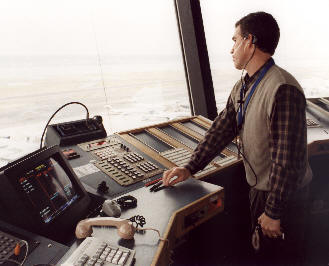
 |
NEWSROOM |
|
|
|
||||
|
NATCA Supports FAA Control Of Airspace Around Manhattan By Mike Mitchell |
||||
 |
September 15,
2009, WASHINGTON – Newark air traffic controller Edward Kragh, NATCA’s
(National Air Traffic Controllers Association) representative to the
Federal Aviation Administration’s New York Visual Flight Rules Airspace
Task Force which examined the airspace above the Hudson River after the
Aug. 8 mid-air collision, told the Senate Aviation Subcommittee today
that NATCA supports the task force’s recommendations of changes to
training, procedures and airspace structure because they would make this
busy corridor safer. Recognizing the collaborative process the task force utilized: “The FAA invited NATCA to be a part of the task force and worked collaboratively with the union throughout. It is our hope that the agency will continue to follow through with its commitment to include us in the completion of this project and in any future changes. … I implore the agency to continue to use this approach for the safety of the flying public.” |
|||
|
Testifying that the Teterboro controller was not at fault in the accident: “There has been a great rush to judgment regarding the underlying causes of the August 8 tragedy. But the controllers on duty utilized the procedures that they had been trained to use and were required by FAA orders to adhere to. The first day the task force met, it was unanimously decided that the current procedures were flawed and that under those flawed procedures, the August 8 accident could not have been prevented.” Detailing the sequence of events before the accident: “On August 8, the Teterboro controller initiated a timely handoff (of the small plane), which the Newark controller accepted. The Newark controller was expecting radio contact from the (plane), which never came. Although controllers at both Teterboro and Newark attempted to re-establish radio communication with the pilot, they were unable to contact him. At the time of the collision, the pilot was not in communication with air traffic control at Teterboro or Newark.” Addressing elected officials’ call for full FAA control of the airspace around Manhattan, requiring that all aircraft flying in this region be under the direction of air traffic controllers: “NATCA and the task force both recognize that this drastic change would require significant resources because present infrastructure is insufficient to handle the changes and there are not enough controllers to handle the increased workload that would result. The geography of the area – with densely-packed skyscrapers – prevents effective radar and radio coverage.” |
||||
| ©AvStop Online Magazine Contact Us Return To News | ||||